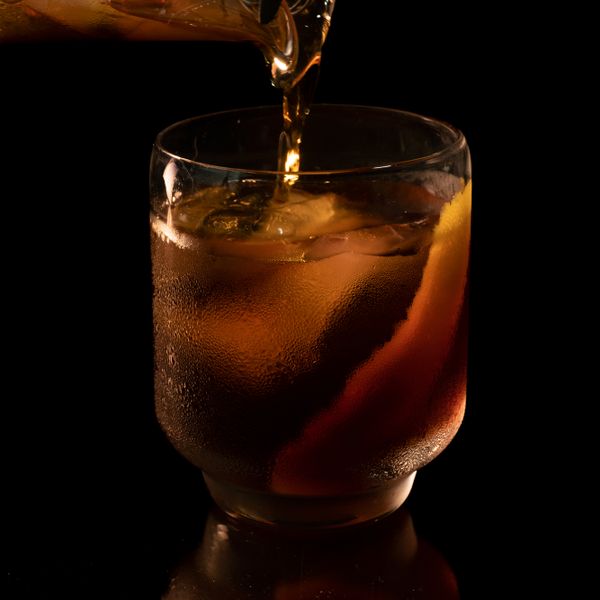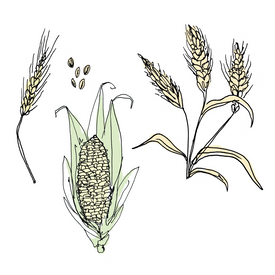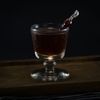
The Gentleman’s Exchange is a good drink with a lot of company; the cocktail landscape has little shortage of short brown whiskey drinks and this one does not veer too dramatically from the formula. Yet we are not the types to hastily dismiss a winning formula, and this cocktail—taken from the page of the Nomad Cocktail Book—does just enough differently to keep this winning formula feeling fresh. As an added bonus, this drink requires no squeezing, blending, crushing, or advanced thought sans a grapefruit peel that isn’t a prerequisite anyways. It’s also quite strong, placing it firmly in the evening line of work. Mix it up as a lazy nightcap or low-key party fare.
This drink has the approximate composition of a Manhattan but with the added perk of being served on the rocks and with a pervasive hint of coffee. Like the excellent revolver cocktail, the Gentleman’s Exchange leverages the impeccable combination of whiskey and coffee, albeit this time with rye rather than the revolver’s call for bourbon. Alongside the rye and coffee are cola notes from the amaro as well as little bits of anise from the absinthe. One of the magic elements of this drink is the way a single teaspoon of coffee transforms it: coffee is present at every level of the drink and this modest and measured dosage shines with restraint and balance. The Suze and amaro combine for a bittersweet finish that helps separate it from the revolver and reminds us a bit of the Long Island Bar’s Erin cocktail.
The original recipe printed in the Nomad Cocktail Book calls for several specific ingredients. Most notably, it calls for cold brew coffee, which we changed to coffee liqueur in our version. This was an easy substitution for us since we typically have coffee liqueur on hand—Mr. Black is our favorite—but it was not with strong intent and cold brew will work equally well. The original recipe also calls for Foro Amaro. As home bartenders we find requests for exotic amari a bit irksome and opted instead for the versatile and easy to find Amaro Averna, but again: if Foro is on hand do not hesitate to try it this way. The original recipe calls for Pernod absinthe, which is fine if not expected, but we prefer Absinthia, which has become our go-to as of late.








